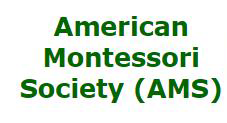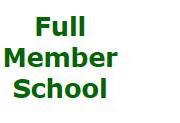A Day at Clear Lake Montessori School
At Clear Lake Montessori school we offer classes for infants, toddlers, early childhood, and elementary students, as well as afterschool care. To understand a day in the life of one of our students, let’s choose a four year old girl in our early childhood class.
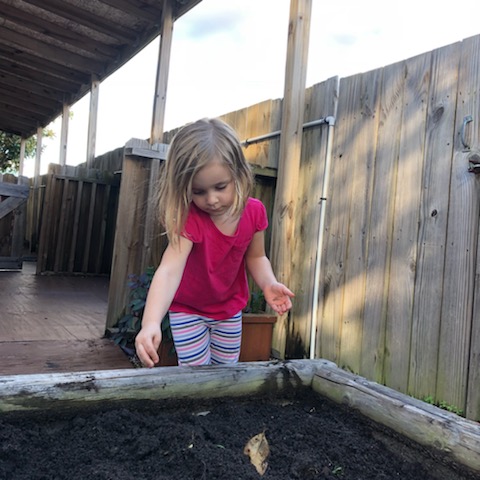 |
Montessori Teachers Follow A PhilosophyChildren arrive in the morning and walk into our school independently. They are warmly greeted with a smile and a “good morning” from a staff member. After hanging her jacket on one of the child-sized hooks provided in her classroom, she can choose to eat breakfast or begin her day with an activity of her choice such as art, puzzles, or building blocks. Her friends begin arriving and they gather in the reading corner to enjoy books and conversation. In our school community building is an important part of our curriculum. The Lead Montessori guides arrive and she joins her classmates outside for morning play before work time begins. She enjoys swinging, riding one of the tricycles, and chasing her friends around an oak tree. The playground area is beautiful, spacious and with many shade trees. Nearby is a children’s vegetable garden and butterfly garden. Her grandmother recently donated soil and seeds. She looks forward to planting the seeds with her friends and teacher. |
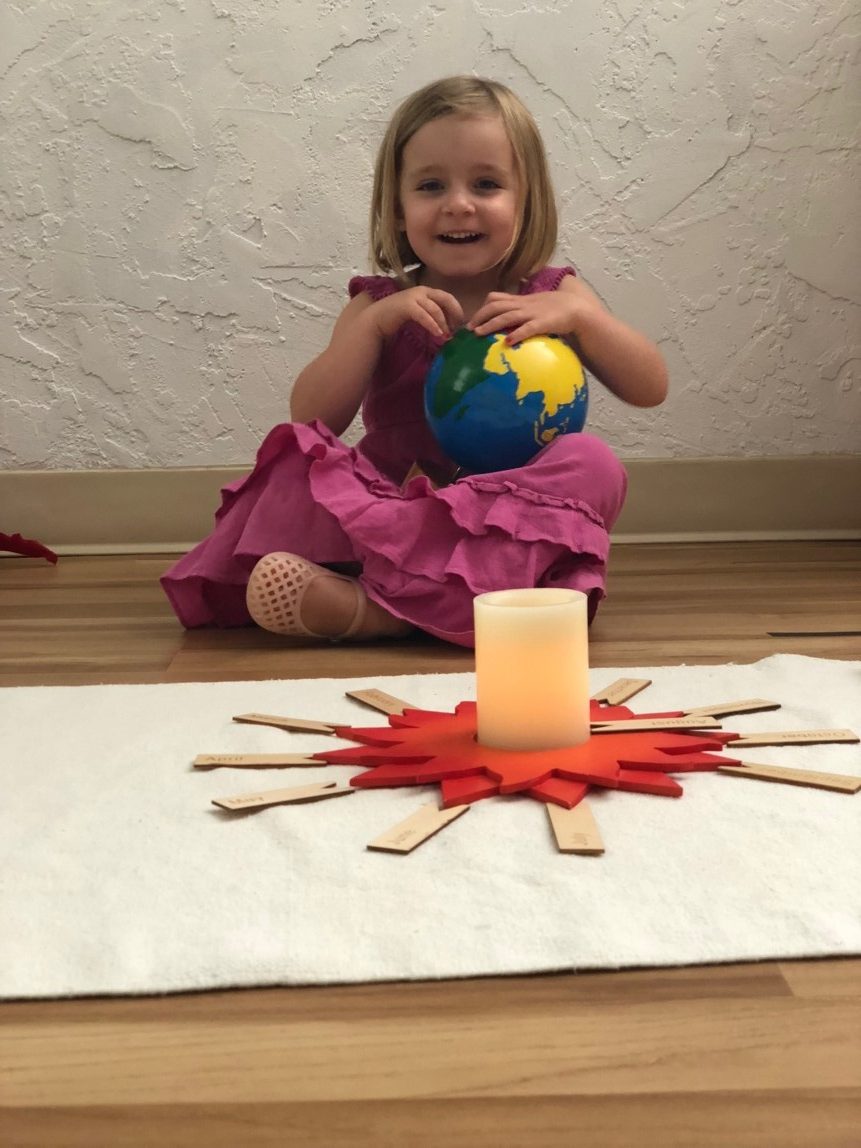 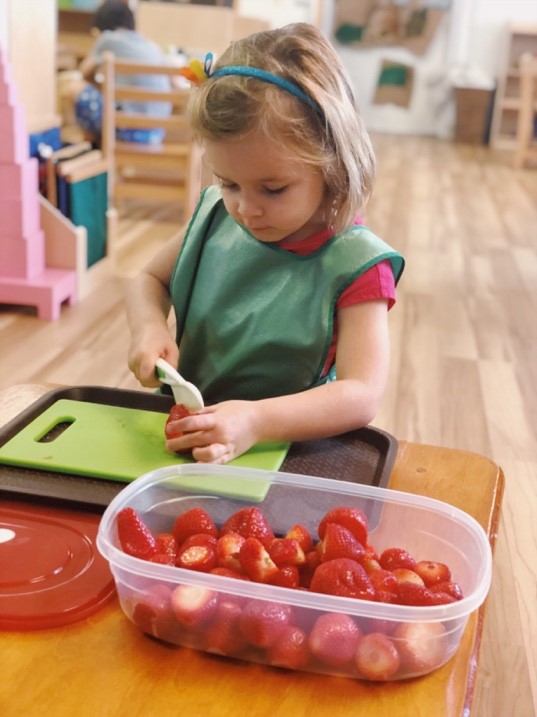 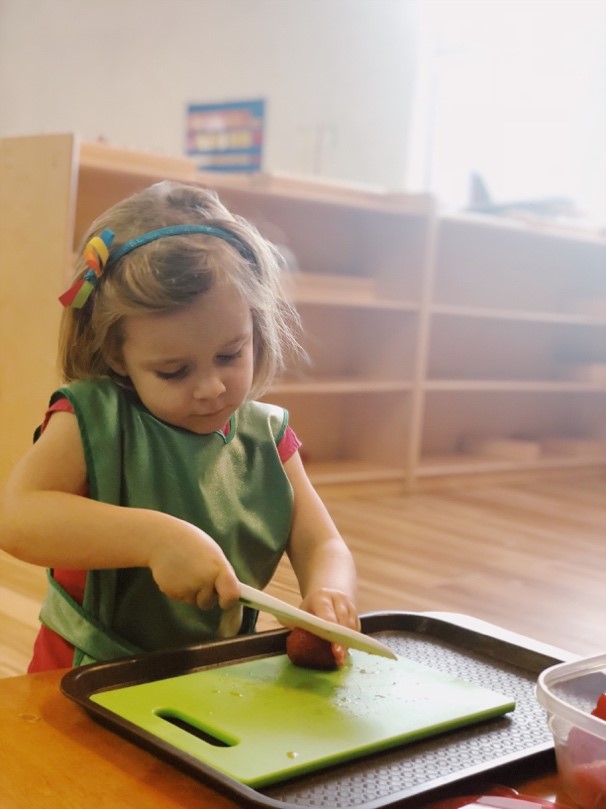 |
Learning By DoingTo signal it is time to return inside for lessons, a teacher rings the outside bell. She gets in line, ready to return to the Practical Life lesson her teacher gave her the day before that she so enjoyed on slicing strawberries. In a Montessori classroom, children receive individual lessons from the Lead guide in four major areas of the classroom: Practical Life, Sensorial, Math and Language. There is also an art and cultural area with geography and science lessons. The teacher observes her students and takes many notes. These observations help her decide when to give her students new lessons based upon their interest and skill level. In a Montessori school, the needs of the whole child are considered including the academic, physical, emotional and social needs. Her teacher noticed the day before she was very interested watching another child prepare strawberries for the morning snack. The teacher offers this lesson to her and she spends more than half an hour joyfully washing and slicing the berries carefully, highly engaged in the activity. During story time the day before her teacher read one of her favorite books, as part of the month’s author study, The Little Mouse, the Red Ripe Strawberry, and The Big Hungry Bear by Don and Audrey Wood. While preparing the strawberries, she recites some of her favorite parts of the story. Her teacher observes the connections she’s making and how her interest in learning to read is developing. She plans to give her a phonics lesson later in the morning. For now though, she allows her all the time she wants to prepare the strawberries. Children are allowed the time they need, without interruption to enjoy their work. This allows their sense of order, concentration, coordination and independence to grow. Practical Life lessons prepare her mind and hand for other lessons to come that have many more steps such as in math, language and geometry. After the strawberry lesson, she chooses a tweezing lesson with sparkly beads with fall colors. She tweezes each bead carefully and intently. This lesson prepares her hand muscles and finger grip to hold a pencil. This lesson also develops her sense of concentration as there are many beautiful beads in the glass dish to choose from for tweezing. When she restores this work to the shelf on her own, her teacher invites her for a phonics lessons, learning sounds of the alphabet using the sandpaper letters. Her teacher traces a lowercase letter made of sandpaper and then invites her to try. She traces and then her teacher says the sound of the letter “aaaaa” like in “apple.” She then introduces another letter, again tracing and saying the sound. The repetition of this work is enjoyable and helpful. By tracing, she is using tactile integration to connect the hand with the mind. Her teacher says, “mmmm” like in “mommy.” This makes her smile and she tells her teacher she will tell her mommy about her new lesson today with the alphabet! |
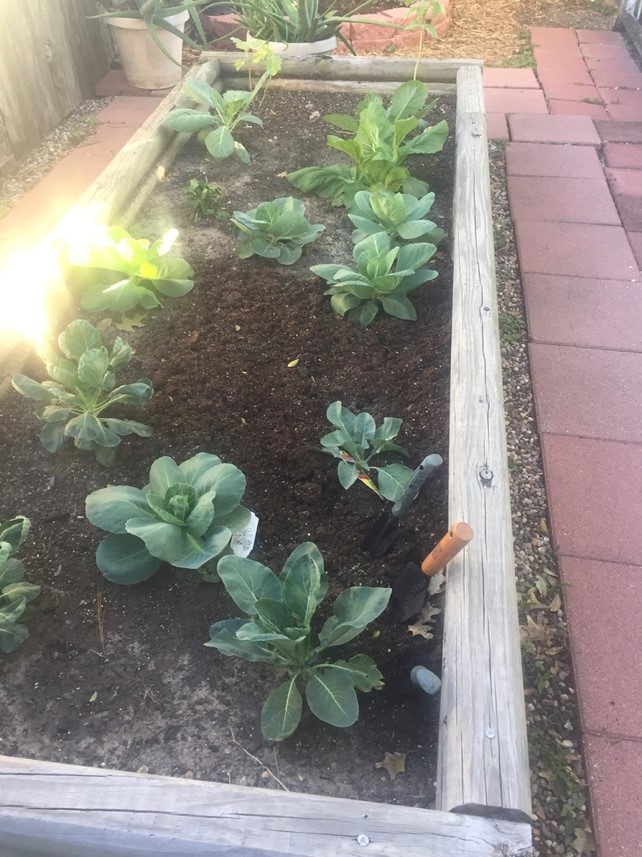
|
|
